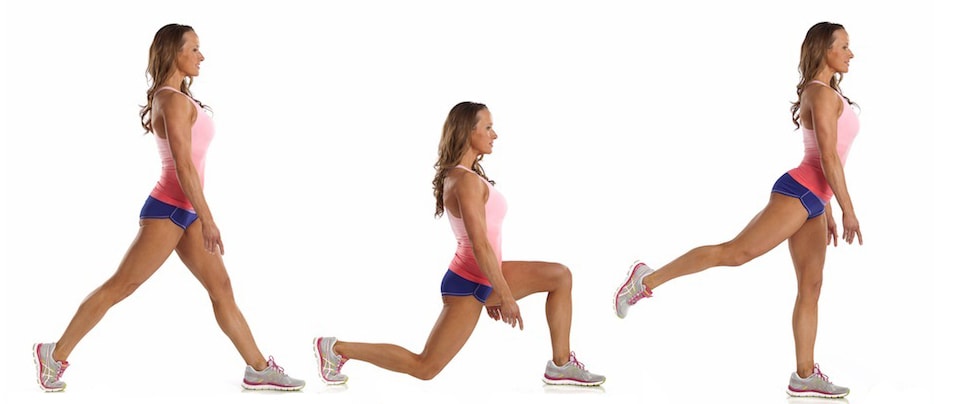
Walking Lunges
(Pictured with kick to the back)
Walking lunges are a great exercise that incorporates stability, balance and strengthen the muscles in the lower body. It also helps to stabilize the abdominals and obliques. When the basic alternating lunge becomes too easy, try holding a set of dumbbells in order to increase the intensity.
While walking lunges aren’t the most sexy and complex exercise to perform, they’re excellent for strengthening and shaping the legs. Not only will you improve the look of your legs with walking lunges, you’ll also be working your lower body muscles, which in turn can improve your speed and athletic performance. Walking lunges can be performed anywhere, in your local gym, at the airport, during a lunch break or in the comfort of your own home. Adding weights can increase the intensity of the exercise, but this isn’t absolutely necessary to see results.
- Begin standing with your feet about hip-width apart (if you want you can also hold dumbbells in your hands down by your side) This will be your starting position.
- Step forward with one leg, flexing the knees to drop your hips. Descend until your rear knee nearly touches the ground. Your posture should remain upright, and your front knee should be in line with your front foot. Do not allow your front knee to go forward beyond your toes as you come down, as this will put undue stress on the knee joint.
- Drive through the heel of your lead foot and extend both knees to raise yourself back up.
- Step forward with your rear foot (in the photo above is an optional kick to the back activating the glutes through additional contraction during the last phase of the exercise).
- Repeat the lunge on the opposite leg.
Ready to take your workouts to the next level?
Check out my Strength Training Plan for Women!

